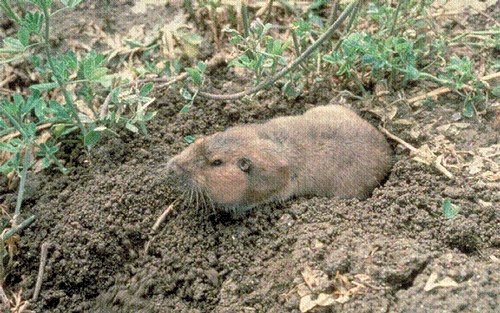The animals we commonly refer to as gophers, are actually named pocket gophers. They are named this because they come equipped with fur lined external pockets they use to carry food and or nesting material while they tunnel under gardens, agricultural fields, and open space.
We often receive calls for help from home gardeners battling pocket gopher problems. Did you know that the typical lifespan of these creatures are three years? They are well designed for burrowing, for instance they are able to put their lips behind their teeth allowing them to keep dirt out of their mouths while using their teeth to dig.
Even one gopher can do a lot of damage, and they can reach densities of 60 or more gopher per acre. In addition to eating plants, they also damage irrigation lines with their chewing. More water problems and loss of this resource can occur when water meant for irrigation is diverted through their tunnel systems.
They live alone, except when females are caring for young. In irrigated areas gophers can produce up to three litters a year. In non-irrigated areas, only one litter per year is produced. In those areas breeding takes place in late winter or early spring, so if you have gophers in this type of setting, now would be a great time to reduce current numbers.
The University of California Division of Agriculture and Natural Resources (UC ANR) has recently updated the free pocket gopher pest note publication. This publication will explain how to determine if you have gophers on your property. It also details several types of control methods. Additional free UC ANR pest notes and other related information can be found at the UC Davis IPM website.

Adult pocket gopher